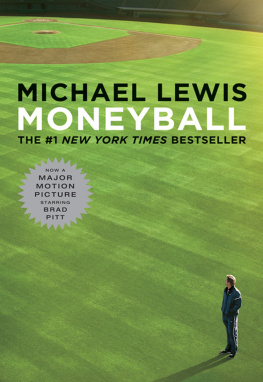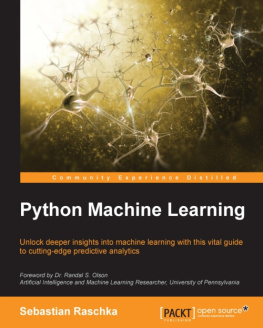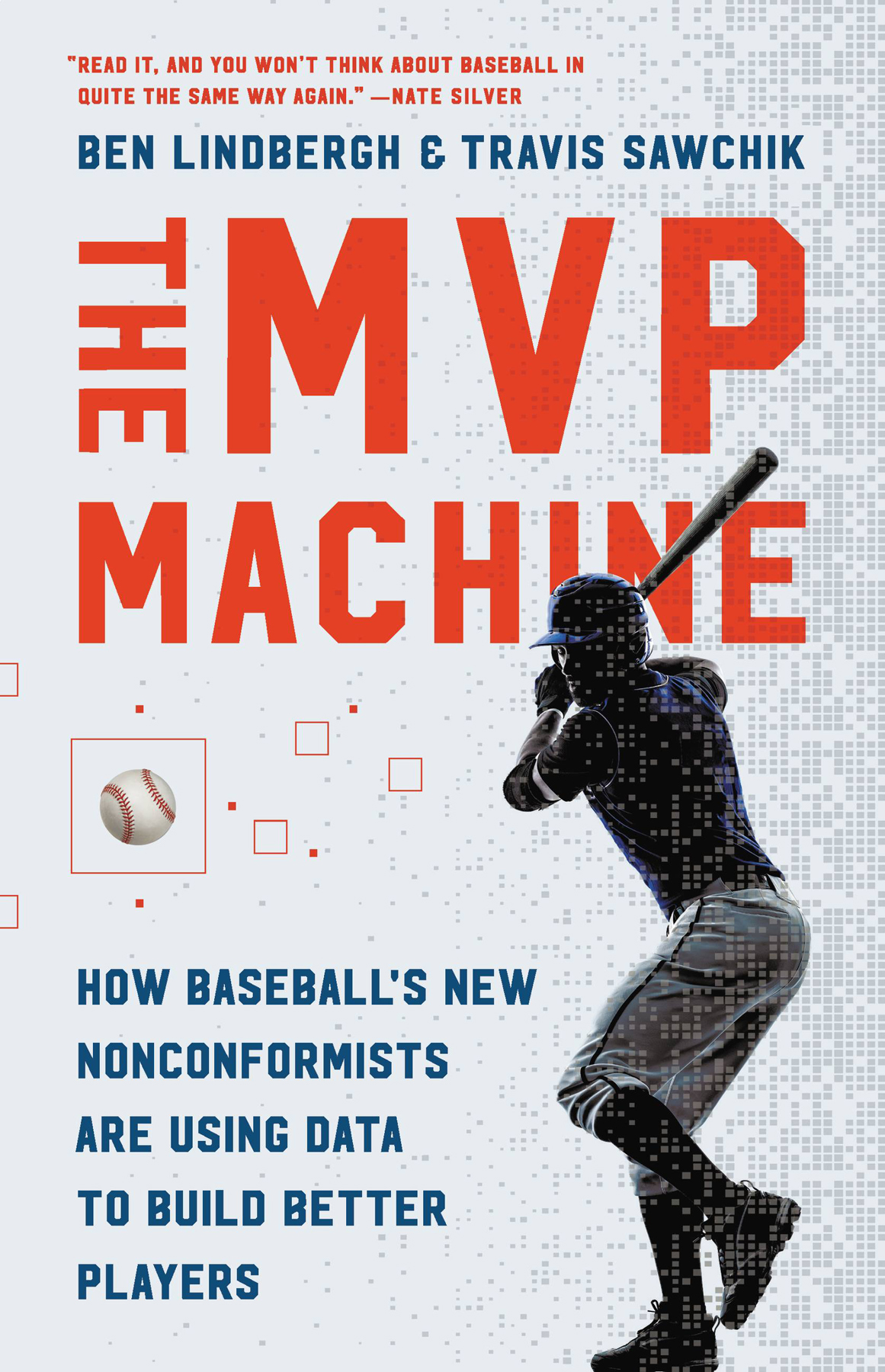Copyright 2019 by Travis Sawchik and Ben Lindbergh
Cover design by Ann Kirchner
Cover image Iasha/Shutterstock.com; Ostill/Shutterstock.com; SkillUp/Shutterstock.com
Cover copyright 2019 Hachette Book Group, Inc.
Hachette Book Group supports the right to free expression and the value of copyright.
The purpose of copyright is to encourage writers and artists to produce the creative works that enrich our culture.
The scanning, uploading, and distribution of this book without permission is a theft of the authors intellectual property. If you would like permission to use material from the book (other than for review purposes), please contact permissions@hbgusa.com . Thank you for your support of the authors rights.
Basic Books
Hachette Book Group
1290 Avenue of the Americas, New York, NY 10104
www.basicbooks.com
First Edition: June 2019
Published by Basic Books, an imprint of Perseus Books, LLC, a subsidiary of Hachette Book Group, Inc. The Basic Books name and logo is a trademark of the Hachette Book Group.
The Hachette Speakers Bureau provides a wide range of authors for speaking events. To find out more, go to www.hachettespeakersbureau.com or call (866) 376-6591.
The publisher is not responsible for websites (or their content) that are not owned by the publisher.
Editorial production by Christine Marra, Marrathon Production Services. www.marrathoneditorial.org
Library of Congress Control Number: 2019934700
ISBN 978-1-5416-9894-9 (hardcover), ISBN 978-1-5416-9895-6 (ebook)
E3-20190511-JV-NF-ORI
TO MY PARENTS, FOR MAKING ME A PROSPECT
BEN LINDBERGH
FOR ALL THOSE WHO DIDNT MAKE THE CUT
TRAVIS SAWCHIK
Explore book giveaways, sneak peeks, deals, and more.
Tap here to learn more.

The only way of discovering the limits of the possible is to venture a little way past them into the impossible. Any sufficiently advanced technology is indistinguishable from magic.
ARTHUR C. CLARKE, HAZARDS OF PROPHECY
Trevor Bauer steps onto a makeshift pitching mound at Driveline Baseball in Kent, Washington, a suburb south of Seattle. The throwing platform consists of a pair of black, rubberized weight-room mats covering a sloped plywood structure that mimics the shape and height of an actual mound. Its January 3, 2018, three months before Opening Day.
The Driveline campus, where inquisitive and often desperate ballplayer pilgrims gather to get better, consists of three buildings strewn about a drab industrial park that also serves as the site of a sewage disposal service, a glassblowing business, and a hydraulics company. Drivelines R&D building, where Bauer spends much of his offseason, is a warehouse of a place, carpeted wall-to-wall with Kelly-green artificial turf. The main entrance is a roll-up garage door, usually left open to a vista of neighboring business units beige, vertically corrugated metal facades and an asphalt parking lot where a collection of modest cars rests. Opposite the door and along the far wall of the facility, occupying nearly the entire length of it, is the bullpen-like pitching area where Bauer is to begin throwing. The home plate hes aiming for has a backdrop of black nylon netting to protect the nearby employees and desktop computers from ricochets.
At the front of the mound is a wooden board, to which cling three small tracking devices used for biomechanical evaluations. Sawdust from the recently assembled, jury-rigged contraption has spilled onto the front of the mound. So much at Driveline is improvised because what was needed was either nonexistent or cost prohibitive. But this unpolished place has become Bauers lab. Every off-season he tries to get better at something, focusing his efforts on gaining a new skill. His goal this winter is to create a much-needed additional pitch.
In his first three full seasons with the Cleveland Indians, 20142016, the right-hander was a roughly league-average starter, a useful player but far from the star he thought he could be. Then, at the end of May 2017, Bauer regressed. Hitters started crushing his fastball, giving him the worst earned run average in the majors (6.00) among qualified starters. There were calls for him to be sent to the Cleveland bullpen. His postgame press conferences grew testier and shorter; after one mid-May start, he ripped off and slammed down the television mic attached to his undershirt. Thanks to an increased reliance on his best pitch, a curveball, and greater use of his slider-like cutter, he was able to turn his season around and posted a strong second half. But he knew he could not be successful long term with the curve as his lone elite pitch, and the cutter variant he was throwing was uncomfortable and hard to command.
Bauer believed the lack of a lateral breaking balla pitch that moved more eastwest than northsouthwas holding him back. Hed turn twenty-seven later that month, an age at which most players, particularly pitchers, have already reached their prime. But coupled with his fastball and his 12 oclock-to-6 oclock, vertically diving curveball, a dependable pitch that moved side to side could flummox hitters and elevate him from inconsistent to elite. He prescribed himself a new pitch: a slider.
In a navy-blue, Indians-issued compression T-shirt and red shorts, Bauer moves to a table behind the indoor mound, where hes positioned two cameras. One is his personal iPhone, which he employs to log and label each of his pitches. The other is an unusual-looking camera, a Carolina-blue colored cube with a protruding circular lens. That high-tech gadget, an Edgertronic SC1 manufactured by the San Jose company Sanstreak, is focused only on his grip of the ball and the initial flight of the pitch. Under tightly grouped pairs of fluorescent lights, Bauer goes to work on his great project of 2018.
Clean-shaven, with his hair closely cropped, Bauer looks into the iPhone lens and speaks.
Normal slider arm slot, full spike, he says.
He looks down at his right hand, which is gripping a ball. The familiar horseshoe of red stitching makes contact with his skin in an unfamiliar way, running along his right thumb and middle finger. He digs his index finger into the white leather cover just inside his middle finger. He steps on the pitching rubber and then launches into his throwing motion and releases the pitch. As the ball travels, it seems to fall off an invisible table, moving more northsouth than eastwest. It bounces well before the plate. A speed of 71.7 mph registers on the electronic radar-reading board, which sits on the carpet just behind the left-handed batters box.
During the season, television cameras and pitch-tracking systems capture the movement of all of Bauers pitches from major-league mounds. But those technologies cant tell him what the little blue box behind the mound at Driveline can: exactly how the ball is coming out of his hand. At hundreds of high-def frames per second, the Edgertronic shows with perfect clarity how his right arm moves and his fingers impart spin to the ball as its released. Examining the video between sets of pitches, Bauer sees the ball first lose contact with his thumb and then separate from his middle finger. His spiked index finger, its fingertip and nail raised vertically and jabbed into the surface, touch the ball last before it flies, subtly altering the axis of its spin. If he times this sequence just right, hell create the perfect spin axis and produce the pitch movement he wants.











